Magazine
Manipur- The Story Of A Lost State
Jaideep Mazumdar
Jun 10, 2016, 02:31 PM | Updated 02:31 PM IST
Save & read from anywhere!
Bookmark stories for easy access on any device or the Swarajya app.
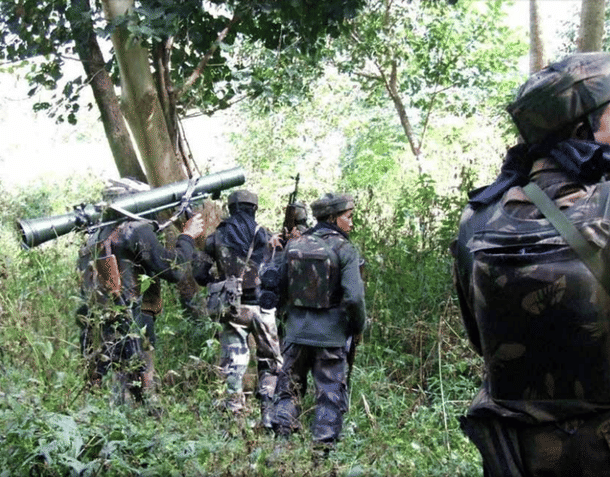
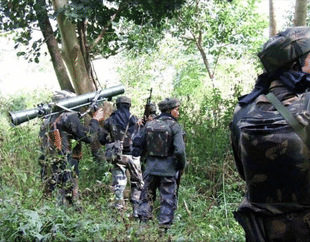
To call Manipur a failed state would be a gross understatement. A state where the writ of the government does not extend beyond the well-guarded confines of the ministerial bungalows and the civil secretariat (and even that has been breached at times), where numerous insurgent outfits formed along ethnic fault lines battle one another and the Indian security forces, where even government officials have to pay a tenth of their salaries as ‘donations’ to the insurgents, a state whose capital comes under an unofficial curfew after dusk, where the Indian army, para-military forces, the state police and the insurgents often train their guns on the unarmed citizenry and carry out unspeakable human rights violations, where extra-judicial killings and rapes have scarred the psyche of the people, where corruption and political chicanery are endemic and a state which has seen little development since it was merged with India (forcibly, assert many in Manipur) is much worse than a failed state. It can be called a lost state.
This landlocked state, bounded by Nagaland to its north, Myanmar to its east and south, Mizoram to its south-west and Assam to its west, has been a boiling ethnic cauldron for many decades now. Geographically, the Imphal Valley, where the eponymous capital city is located, forms the heart of the state and is surrounded by hills where the tribals—mainly Nagas and Kukis—live. The Imphal Valley is home to the Meiteis, who form a majority of the state’s population of 27.5 lakh and have been living in the valley since the first century AD.
What started as a small clan principality of Meiteis grew into a powerful monarchy with Meitei kings extending their rule to the hills and even parts of Myanmar and Assam. The first Meitei king, Nongda Lairen Pakhangba, ruled from 33 AD and was followed by 72 successors, making this dynasty the oldest ruling dynasty in this part of the world. The princely state became a British protectorate in 1824 and remained so till 1947 when the then king, Budhachandra Singh, promulgated a constitution establishing the state as a democracy under a titular king. Elections to the Manipur Parliament were held in 1948 and the kingdom thus became the first representative state in South Asia. But in 1949, Maharaja Budhachandra was summoned to Shillong, then the capital of Assam, put under house arrest and forced to sign the instrument of accession to India. Manipur joined the Indian Union on 15 October 1949.
The forced accession, the humiliation of their Maharaja and this once proud and independent kingdom being reduced to a “Category C” territory (administered directly by New Delhi through a chief commissioner) led to the first armed rebellion against the Indian State by the Communist Party of Manipur and its Red Guard in March 1950. But this fizzled out with the death of its leader, the legendary Hijam Irabot Singh, in 1951. One and half decades later, in November 1964, the United National Liberation Front (UNLF) was born to fight for Manipur’s sovereignty. The UNLF split in the early 1990s and over the years, many other outfits like the People’s Revolutionary Party of Kangleipak, the People’s Revolutionary Army and the Kangleipak Communist Party were born and they, too, splintered. These insurgencies were limited mainly to the Imphal Valley and the hills became restive after the Naga National Council (NNC) under Angami Phizo declared independence for Nagaland in March 1956.
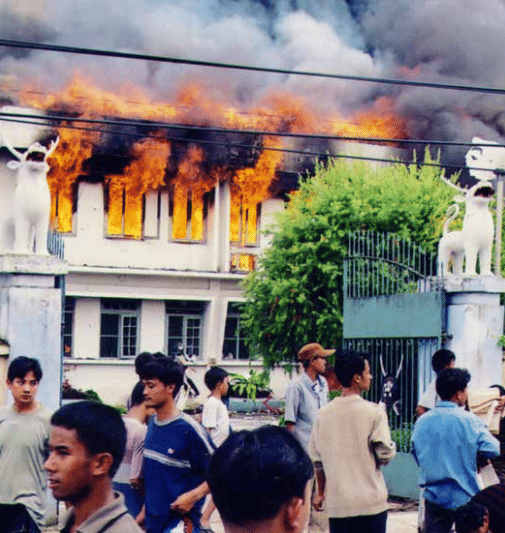
The Naga insurgency slowly spread to the Naga-inhabited areas of the hills of Manipur. The draconian Armed Forces (Special Powers) Act of 1958 (AFSPA) was enforced in the entire state in 1970 and thus began a traumatic saga of extra-judicial killings, tortures, rapes, molestations and gross human rights violations by the security forces. The South Asia Terrorism Portal (SATP) lists 12 primary and active insurgent groups in the state and along with their splinters and factions and the six other groups that are in peace talks with the government, there are today more than 60 insurgent groups in Manipur. Almost all are formed on ethnic lines and thus there are outfits that claim to represent the interests of the Meiteis, Nagas, Kukis and the Pangals (Meitei Muslims).
Manipur is also wracked by a sharp hill-valley divide, a divide that is driven almost entirely by the dream of Thuingaleng Muivah (the general secretary of the dominant faction of the National Socialist Council of Nagaland, or NSCN, which is now engaged in peace talks with the Government of India), to integrate Naga-inhabited areas of Manipur, Assam and Arunachal Pradesh with Nagaland and form a new state called ‘Nagalim’. Muivah belongs to the Thangkhul tribe of Manipur’s western Ukhrul district bordering Myanmar. Many believe that since he doesn’t belong to Nagaland and is not viewed as a ‘local’ by the Naga tribes of Nagaland, he would find it impossible to gain any office in Nagaland after a probable peace accord with Delhi. Hence his quest for Nagalim where he can hold a high office.
This demand for Nagalim has pitted the Nagas in the hills of Manipur with the Kukis and the Meiteis. In the early 1990s, the Nagas of the hills, reportedly aided by the NSCN(IM), started cleansing the hills of the Kukis. Hundreds of Kukis were killed and their villages looted and torched. This led to the formation of Kuki insurgent outfits who retaliated against the Nagas. Though the hostilities have ended, the issue simmers under the surface. As for the Meiteis, they have been extremely wary of the talks between the NSCN(IM) and New Delhi, and suspect that in order to placate Muivah, New Delhi may redraw the boundaries of Manipur.
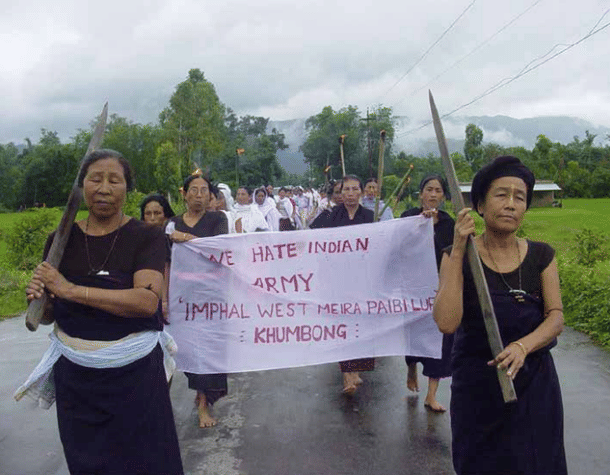
This fear has spawned a popular movement since the late 1990s to preserve the “territorial integrity” of Manipur. In June 2001, when New Delhi, in an ill-advised move, extended the ceasefire with the NSCN(IM) to the Naga-inhabited areas of Manipur, Imphal Valley erupted in unprecedented protests that led to the state legislative Assembly and bungalows of many ministers being torched and reduced to ashes. Fourteen Meitei youths were killed in firing by security forces. The extension of the ceasefire to Manipur was withdrawn, and New Delhi has been more careful since then. But the opaque nature of the talks with the NSCN(IM) leads to wariness. “Peace talks have to be transparent. Opacity leads to more violence and mistrust. This again helps the insurgent groups since conflicts generate more funds,” says Kshetrimayum Onil, lead coordinator of leading human rights group Reachout.
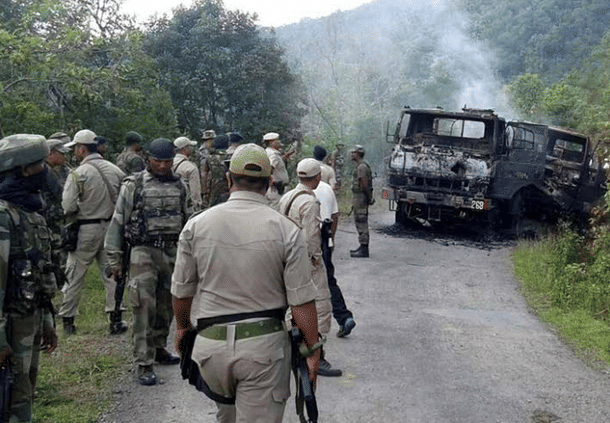
But there is no wishing away the hill-valley divide and three bills passed by the state Assembly last year have only accentuated this divide. The three bills, still awaiting the President’s assent, are being viewed by the Kukis and Nagas as an insidious attempt by Meiteis to snatch the tribals’ traditional rights. Thangkhosei Haokip, president of Kuki Inpi Manipur, the apex body of Kukis, says the three bills “have been cleverly drafted by the Meiteis to disempower tribals.” Gaidon Kamei, president of the United Naga Council (the apex body of Nagas in Manipur) says that the three bills are another example of the “’Meiteis’ desire to subjugate the Nagas and discriminate against us.”
But it is only in their opposition to the three bills that Haokip and Kamei are united. “Kukis are nomads who migrated to the hills of Manipur. Our forefathers gave them land to settle down and they used to pay taxes to the Nagas,” asserts Kamei. Haokip rubbishes this and cites the unrest in the hills against the British from 1917 to 1919. “The Kuki chiefs controlled the hills and fought the British. The British engaged the Nagas from Nagaland as labourers and that’s how they came to settle in the hills.”
Kamei is unequivocal that Nagas and Meiteis cannot live together as part of the same state. All Nagas dub the Ibobi Singh government as ‘communal’ and ‘anti-Naga’. “There is no more room for dialogue or understanding between the Nagas and Meiteis. We will have to separate,” he says. This finds resonance among Nagas in Manipur. But the Meiteis are unwilling to acknowledge this. Former chief minister Radha Bonod Koijam says that the hill-valley divide is the handiwork of some Naga leaders. “The Naga elite staying in the Imphal Valley don’t want their own people to develop and so harp on this divide to stay relevant,” he says. But he is quick to agree that lack of development in the hills has led to this divide. “People who bag contracts for constructing roads, bridges, schools and hospitals in the hills are all front men of the NSCN(IM) and that outfit pockets all the money. Hence, the hills remain underdeveloped,” he says.
The tribals in the hills surrounding the Imphal Valley often hold the Meiteis and the Imphal Valley hostage. When Meiteis assert themselves and challenge the demand for Nagalim or vow to preserve their state’s territorial integrity, the Nagas in the hills impose blockades on National Highway 2 (formerly NH 39). NH 2, which originates in Assam and passes through Nagaland before slicing through Manipur, is the hill state’s lifeline. The Nagas have blocked this highway for weeks and even months at a stretch, plunging the Valley into severe hardships. The last blockade two years ago, which lasted for over a month, saw severe shortage of essential commodities in the Valley. LPG cylinders were sold in the black market for Rs 2,500 to Rs 3,000 apiece while the price of petrol shot up to Rs 300 a litre. Relatives of critically ill patients had to fly down to Guwahati and Kolkata to buy medicines.
But much more important than the hill-valley divide is the insurgency festering in the state. Though the security forces have managed to contain the outfits and ceasefire agreements are in force with many of them, the militants continue to pose a threat to normal life. All people of Manipur—be they government employees, school teachers, businessmen, farmers and even rickshaw pullers—have to pay about 10 per cent of their earnings to militant groups, referred to as ‘UG’s or underground groups. Government employees have the ‘tax’ they have to pay to the UGs deducted before their salaries are disbursed. Even religious institutions—temples and churches—as well as educational institutions have to cough up huge sums to the UGs. A percentage from all contracts awarded by the government go to the UGs to fund their battles with the security forces.
“It is a vicious cycle. A substantial portion of funds meant for development works or welfare schemes go to militants to fight Indian security forces. Contractors and politicians also have to pay protection money to the UGs. Thus, corruption increases. And this underdevelopment breeds resentment among the masses. Underdevelopment and lack of employment opportunities then feed the ranks of the UGs,”Professor Amar Yumnam, head of the department of economics at Manipur Central University.
Yumnam says that more than insurgency and corruption, it is the dismal lack of governance that is Manipur’s biggest malaise. He adds:
“Our politicians don’t connect with the masses. All problems that Manipur is facing can be tackled with development. Development can replace ethnicity and break the current articulation along ethnic lines,”Professor Amar Yumnam, head of the department of economics at Manipur Central University.
Manipur’s economy is in the doldrums and with no industry, unemployment is very high. Last year, the official unemployment figure (educated unemployeds registered with employment exchanges) was nearly eight lakh, which is a scandalous 30 per cent of the population. Manipur has seen negligible investment over the years and government jobs remain the only source of employment. But with corruption rife and every job having a hefty price tag, most do not get jobs and join the ranks of the UGs.
Senjam Mangi Singh, a senior professor of political science at the Manipur Central University, feels it is obvious that Manipur is a failed state. “But it will be unfair to blame the government alone for this,” he says, adding that Manipur’s politicians lack vision. He is worried about the division of Manipur along ethnic lines.
“There are even civil society groups and political parties catering to specific ethnic groups. This is dangerous. What Manipur needs is good governance.”Senjam Mangi Singh
Former minister R K Ranjan says that the writ of the government doesn’t run beyond the state secretariat.
“From the very beginning, people’s representatives didn’t have any idea of development. Developmental justice has not been delivered. Our elected representatives sit in Imphal and don’t even know their constituencies. The hills haven’t seen any land reforms, which is a major roadblock to development of the hills. The government lacks any firm determination to govern. Corruption is endemic and most MLAs and ministers are contractors,”Former minister R K Ranjan
says Ranjan, who is also a senior BJP leader.
One of Manipur’s leading advocates, Khaidem Mani, says the fount of all problems is elections.
“Elections in Manipur are a festival of corruption. Huge sums of money are spent by candidates to entice voters and to buy the support and protection of insurgents. After being elected, this money has to be recouped. This leads to corruption and more ills,”Khaidem Mani
he says. CPI leader and former legislator M. Nara Singh says that elections in Manipur “are a festival of liquor and money and display of muscle power.” The first step in tackling the rot in Manipur is holding free and fair polls. There is no governance in Manipur and our leaders are corrupt and opportunistic. The AFSPA has created havoc, the state’s economy is in the doldrums and Manipur is suffering from multi-organ failure,” he says.
At the micro level, the social landscape of Manipur is pockmarked and scarred by innumerable tales of sufferings and humiliations at the hands of security forces. There’s not a single family in Manipur that does not have a harrowing tale to tell about a family member, relative, friend or neighbour being harassed, tortured, killed, molested, raped, detained without reason or humiliated by security forces. The concentration of security forces—regular Indian army and para-military forces like the Assam Rifles, the BSF and the CRPF as well as the dreaded Manipur Police commandos and armed police—in the state, spread over 22,327 square kilometers, is the highest in the country after Kashmir.
But unlike Kashmir, where human rights violations and excesses by security forces get instant media and political attention, worse transgressions by the men in uniform don’t figure in the national media or the political narrative. The AFSPA provides immunity, and thus encouragement, to the security forces to break the law. The Imphal Valley is dotted with many memorials to the victims of security forces.
Sobita Mangsatabam, secretary of Women Action For Development, which works with victims of violence, points out that when AFSPA was imposed in Manipur, there was only one insurgent group. “Today, there are so many. It is clear that AFSPA has failed to contain and eliminate insurgency. It has to go,” she asserts. Sobita has just been to Tokpa Ching, a village in Thoubal district adjoining the Imphal valley. “In this cluster of 25 villages where we work, more than a hundred women have been widowed by insurgency and counter-insurgency in the past two decades,” she says. There are an estimated 10,000 “war widows”, and countless orphans, in Manipur at present.
There have been repeated demands to lift AFSPA, the most dramatic one being the disrobing by women in front of the historic Kangla Fort (which was then occupied by the Assam Rifles) on 13 July 2004, against the rape and murder of a young woman by suspected Assam Rifles men two days earlier. Though that hit the national headlines and shamed the nation, the AFSPA continues to be in force in Manipur and under its shield, security forces continue to behave with impunity, trampling on people’s rights and dignity. And the extortionist insurgents, corrupt contractors and politicians continue to hold the state and its people to ransom.
Such is the sad story of a lost state, a state whose vital organs have failed.
This article was published in the May 2016 Issue of Swarajya Magazine. To subscribe, click here.
Jaideep Mazumdar is an associate editor at Swarajya.





